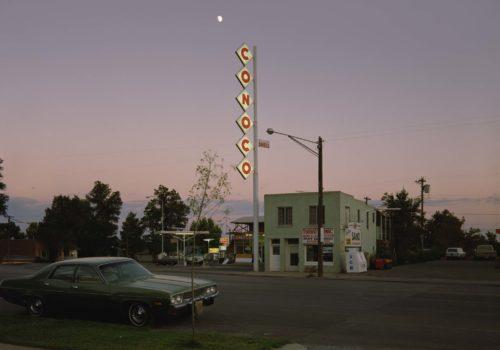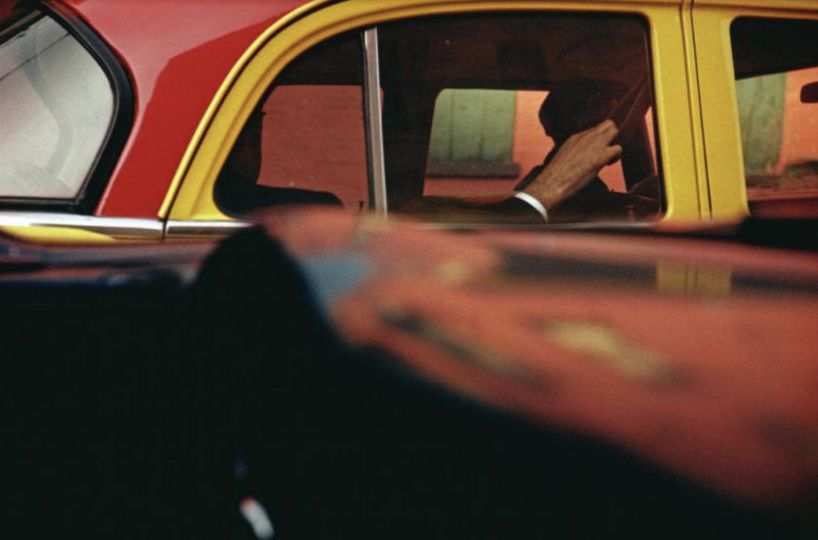Currently on view at the Centre Pompidou-Metz until November 18, 2024, Seeing Time in Colors is not an exhibition about color, as Sam Stourdzé has repeatedly clarified.
The specialist in contemporary imagery and director of Villa Medici since 2020 proposes to explore the three major challenges that have driven photography since its inception: capturing the image, time, and color. These three technical challenges have each led to aesthetic advancements. The exhibition highlights this perspective through a journey conceived as a “great aesthetic and subjective promenade” within the history of photography. The exhibition unfolds in seventeen rooms, each telling a “small story” within the larger narrative of photography.
Sam Stourdzé never imagined he would see this promenade one day set up in an exhibition space: “This is a project that would rather have been seen as a book, as bringing together such a large number of masterpieces seemed impossible.” Seeing Time in Colors brings together exceptional loans that have allowed for juxtapositions the curator “dreamed of for over thirty years.” For example, placing Gustave Le Gray’s seascapes alongside Hiroshi Sugimoto’s Seascapes or Thomas Ruff’s constellations with the first photographs of the Milky Way taken by the Henry brothers in the late 19th century. While the space images tell the story of the birth of the notion of photographic evidence—without these photographs, how could we testify to our conquest of the sky?—the marine landscapes evoke the attempt to capture the sea and sky in the same frame: Sugimoto slows down time through long exposures, while Gustave Le Gray combined two negatives via montage.
Visitors will also discover a unique collection of photos taken using stroboscopic flash, a technique made famous by Harold Edgerton. Among them are the famous crown created by a drop of milk falling onto the surface of a pan and the apple pierced by a .30 caliber bullet. A few years later, American Berenice Abbott continued these explorations during her collaboration with the Massachusetts Institute of Technology (MIT). The movement of bullets is broken down into scientific and highly poetic views, lesser-known images of the photographer who was mostly known for her views of New York.
Each room functions as an exhibition within the exhibition. Together, they highlight the various ways photographers have tried to capture one of the three essential factors in capturing reality. This “quest to see” began with the birth of photography in the 19th century and continues today in many forms. This is evidenced by the beautiful lunar cyanotype by photographer Hugo Deverchère or the thin slices of sedimentary rock projected onto photosensitive paper, through which Dove Allouche reveals the “still unexplored potentials of the photographic medium.”
The exhibition also recounts rediscoveries of personalities or practices. For example, color was long shunned by artists and left to amateurs or the press. History has shown, however, that many photographers used it: Yevonde Middleton, known as Madame Yevonde, experimented with color using the Vivex process as early as the 1930s. Saul Leiter, whose work was rediscovered only in the 1990s, also worked in color. In the 1970s, while Americans Joel Meyerowitz, Stephen Shore, and William Eggleston were considered pioneers of color photography, it was often forgotten that Helen Levitt paved the way for the recognition of color in 1974 by projecting a slideshow of forty slides at the MoMA, an innovative presentation that Nan Goldin would revisit ten years later.
Throughout the exhibition, the beauty of these images, often born from scientific experiments, is striking. The exhibition brilliantly demonstrates how these achievements have also led to major aesthetic advances. Sam Stourdzé’s ambition was to highlight the originality of photographers’ perspectives on the world, elevating them to the rank of great artists, even though the medium has only been widely recognized as an art form for about twenty years. For a long time, it was often compared to painting. In a humorous twist, the exhibition concludes with paintings by the German artist Gerhard Richter, who prefers to paint from photographs to avoid being “contaminated by the subjectivity of reality.” This choice resonates with Sam Stourdzé’s hope: “I hope that one day we can say of a painting that it is as beautiful as a photograph.”
Curator : Sam Stourdzé
Seeing / Time / In Colour
The Challenges of Photography
From July 13 to November 18, 2024
Centre Pompidou-Metz
1 Parvis des Droits de l’Homme
57020 Metz, France
www.centrepompidou-metz.fr

















